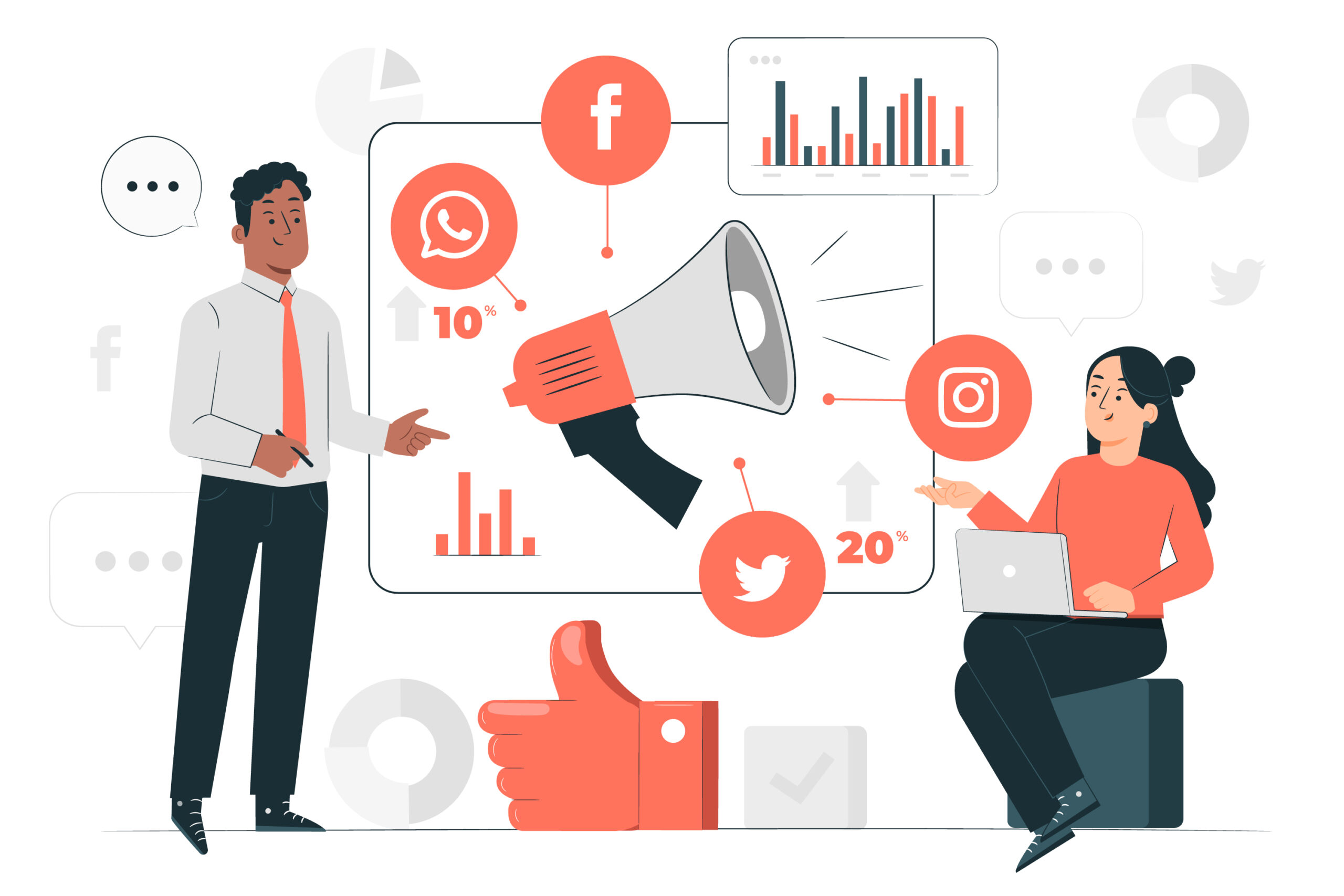Inspiring Social Media Marketing Examples That Drive Real Results
In today’s digital world, social media marketing has become an essential tool for businesses looking to reach a global audience, build brand recognition, and increase sales. However, the true success of social media marketing lies in creating engaging, innovative campaigns that not only capture attention but also drive tangible results. Let’s dive into some inspiring examples of social media marketing campaigns that have achieved significant success, demonstrating how businesses can effectively harness the power of platforms like Instagram, Facebook, Twitter, and LinkedIn to boost their brand.
Nike’s “Dream Crazy” Campaign
Nike has long been a master of creating emotionally charged social media marketing campaigns, and its “Dream Crazy” campaign is a perfect example. With a powerful message featuring athletes like Colin Kaepernick, the campaign encouraged people to believe in their potential, regardless of the obstacles they face. By leveraging the platform of Instagram, Twitter, and TV commercials, Nike generated not only millions of social media interactions but also impressive sales growth, ultimately increasing its stock value by 5% within a few days of launch.
What makes this campaign inspiring is its ability to blend emotional storytelling with brand values. By connecting on a deeper level with its audience, Nike managed to maintain its position as a leader in the sportswear industry, while simultaneously creating a conversation that resonated across different demographics. It’s a testament to the power of values-driven marketing and the potential social media holds when done right. This is a clear example of how understanding the emotional triggers of your audience can make a lasting impact, as noted by experts in social media marketing at resources like Social Media Examiner.
Starbucks’ “White Cup Contest”
Starbucks has built a strong community through social media engagement, and one of its standout campaigns is the “White Cup Contest.” The brand encouraged customers to draw on their plain, white Starbucks cups and share their designs on social media with the hashtag #WhiteCupContest. The winner’s design would be featured on a limited-edition Starbucks cup, generating excitement and fostering a sense of belonging among customers.
This campaign is a perfect example of user-generated content (UGC) being leveraged to create a highly interactive experience. Starbucks not only increased brand visibility but also engaged directly with its customers, enhancing customer loyalty. By keeping the call to action simple, create and share, Starbucks turned ordinary consumers into active participants, thus generating a buzz that transcended social media. Such UGC-driven campaigns can also be found in a wealth of case studies from leading platforms, with HubSpot often providing insights into successful content strategies.
GoPro’s User-Generated Content
GoPro has made an art form of user-generated content (UGC), a strategy that has propelled the brand to new heights. With a heavy emphasis on adventure, exploration, and capturing stunning visuals, GoPro encourages its users to share their photos and videos using the hashtag #GoPro. The brand then showcases these posts on its social media accounts and even in commercials, giving users recognition while reinforcing its own brand identity as the go-to camera for extreme activities.
This form of social media marketing has proven highly effective, with GoPro’s Instagram account boasting millions of followers and a highly engaged audience. The strategy taps into the emotional appeal of its users, fostering a sense of community and belonging. Not only does this approach generate engagement, but it also highlights the brand’s utility and quality in real-life settings, driving both brand awareness and product sales.
ALS Ice Bucket Challenge
The ALS Ice Bucket Challenge took the world by storm and is one of the most viral social media marketing campaigns to date. The challenge encouraged individuals to dump a bucket of ice water over their heads and share the experience on social media, all while donating to ALS research. The campaign’s simplicity and viral nature led to millions of people, including celebrities and influencers, participating in the challenge, making it a huge success.
What made this campaign so impactful was the combination of social media, charity, and influencer participation. It raised over $115 million for ALS research and was covered extensively across all platforms, including Facebook, Instagram, and Twitter. It demonstrates how social media marketing, when aligned with a compelling cause, can drive massive engagement and results, far beyond what traditional marketing would achieve.
Coca-Cola’s “Share a Coke” Campaign
The “Share a Coke” campaign by Coca-Cola is another stellar example of how social media marketing can create personalized experiences for consumers. By replacing the iconic Coca-Cola logo on bottles with popular names, the campaign encouraged people to find a bottle with their name (or their friend’s name) and share it on social media. This personal touch resonated deeply with customers, and the hashtag #ShareACoke quickly went viral, as people shared photos of themselves enjoying their personalized bottles.
This campaign generated an enormous amount of engagement and brand conversation across social media platforms, significantly increasing Coca-Cola’s market share and sales. The success of “Share a Coke” highlights the effectiveness of personalization in social media marketing and the ability to forge stronger emotional connections with consumers. Coca-Cola’s ability to align a global brand with an individual experience was a major driver of its success.
Wendy’s Twitter Roasts
Wendy’s has become known for its witty, sometimes savage, Twitter account. The fast-food chain gained widespread attention by engaging in humorous “roasts” of both its competitors and random Twitter users. These roasts, combined with the brand’s playful tone, humanized the company and made it stand out in a highly competitive industry.
This strategy worked because it tapped into the viral nature of humor on social media. Wendy’s Twitter account garnered thousands of likes and retweets with each post, leading to increased brand awareness and a surge in engagement. By being authentic and having fun with its social media presence, Wendy’s was able to foster a closer connection with its audience, proving that personality-driven content can have a huge impact on brand recognition.
Conclusion
Social media marketing is no longer just about promoting products, it’s about creating meaningful connections with your audience. The brands highlighted above are great examples of how companies can leverage platforms like Instagram, Twitter, and Facebook to drive engagement, foster loyalty, and achieve impressive results. Whether it’s through emotional storytelling, user-generated content, or clever engagement strategies, the key to success lies in understanding your audience and using creativity to foster deeper connections.




